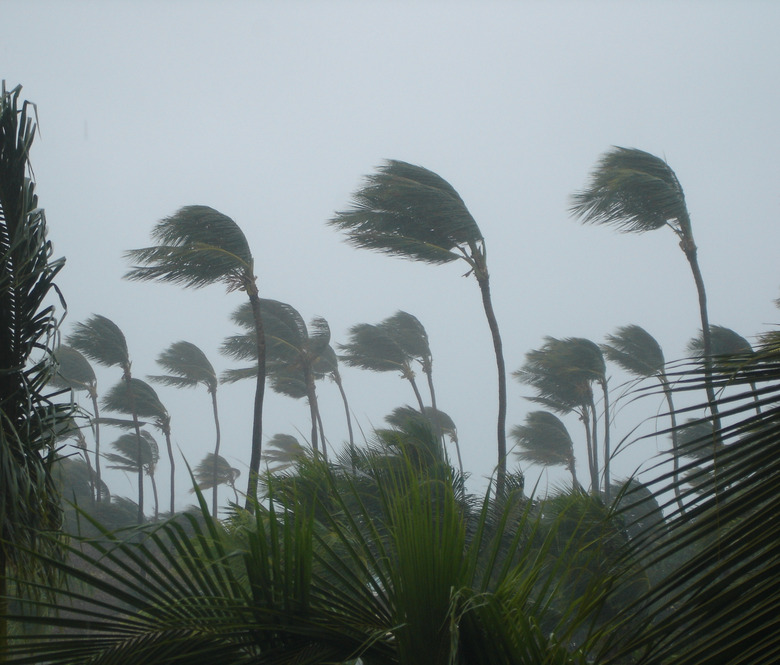The Stages Of Mid-Latitude Cyclones
In the early 1900s, Norwegian meteorologists developed the first models for the life cycle of mid-latitude cyclones. Also known as wave cyclones, extra-tropical cyclones or baroclinic storms, mid-latitude cyclones tend to form between 30 degrees and 50 degrees of latitude during the winter months and develop into massive, spiraling storms that can grow up to approximately 1,000 miles wide.
Cyclogenesis
Cyclogenesis
During the initial stage of the cyclone's life cycle, also known as cyclogenesis, a boundary separates opposing fronts of cold and warm air. When an upper-level disturbance moves over the front, it causes a wave to form. Cyclonic shear begins to occur when the warm and cold fronts slide against one another, generating the spinning motion characteristic of cyclones. The meeting of cold and warm air creates precipitation, which is heaviest near the border of the front.
Mature Stage
Mature Stage
During the cyclone's mature stage, the wave formed during the initial phase grows as warm air replaces the space left behind by the moving cold front, and the organization of both the cold and warm fronts increases. The cold front moves faster than the warm front, intensifying the cyclonic circulation. The system's lowest pressure is located at the center of the wave, and the cyclone's winds are strongest about eight miles above ground.
Occluded Stage
Occluded Stage
In the mid-latitude cyclone's third stage, the denser cold front catches up with the warm front. Because the warm air isn't dense enough to displace the cold air ahead of it, it shifts up and slides above the cold air in its path. This action eventually forms an occluded front, in which the wave transforms into a loop, which is narrower at its base and cuts off the supply of warm air.
Dissolving Stage
Dissolving Stage
The final stage of the cyclone occurs when the loop formed by the cold front boundary surrounding the low-pressure pocket of warm air closes. This cuts off the supply of warm moist air and the lifting force caused by the interaction between the cold and warm fronts. The loss of the convergence and uplift mechanisms cause the cyclone to dissolve, and the low pressure system gradually stabilizes.
Cite This Article
MLA
Kramer, Meg. "The Stages Of Mid-Latitude Cyclones" sciencing.com, https://www.sciencing.com/stages-midlatitude-cyclones-8454789/. 13 March 2018.
APA
Kramer, Meg. (2018, March 13). The Stages Of Mid-Latitude Cyclones. sciencing.com. Retrieved from https://www.sciencing.com/stages-midlatitude-cyclones-8454789/
Chicago
Kramer, Meg. The Stages Of Mid-Latitude Cyclones last modified March 24, 2022. https://www.sciencing.com/stages-midlatitude-cyclones-8454789/
